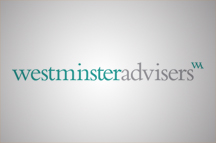.jpg) Earlier this week Westminster Advisers were delighted to host a breakfast event with Chris Giles, the Financial Times’ Economics Editor, to consider the reality behind the political rhetoric on public spending and fiscal policy.
Earlier this week Westminster Advisers were delighted to host a breakfast event with Chris Giles, the Financial Times’ Economics Editor, to consider the reality behind the political rhetoric on public spending and fiscal policy.
With the election now just six weeks away, the two main parties’ campaigns are increasingly focusing on the central issue of who has the ‘better plan’ (to borrow from Labour’s slogan) for Britain’s future. Key to this are their competing visions for how to achieve a sustainable fiscal policy. Both have committed to further reductions in public spending, but the Conservatives are planning to achieve a primary surplus from 2018-2019 while Labour have promised to no longer be borrowing to finance day-to-day spending by 2020. Either way, the next Chancellor will need to employ a combination of tax rises and spending cuts. With a Spending Review expected shortly after the election, the campaign itself is to some extent a ‘phoney war’, with the real battles between competing political and departmental spending priorities yet to begin.
Within this context, Chris’ views on the reality of public spending after the 2015/16 financial year were highly insightful.
Some key points are highlighted below:
-
 The “spending rollercoaster” outlined by the OBR is unlikely to actually happen. Despite the government setting out plans for dramatic cuts to government spending in 2016-17 before the biggest increase in real spending for a decade in 2019-20 (paid for by lowering the previously anticipated surplus target), after the election it is probable that another fiscal year (2020/21) will be added to projections – giving a government of whatever hue an additional year to “smooth things out”.
The “spending rollercoaster” outlined by the OBR is unlikely to actually happen. Despite the government setting out plans for dramatic cuts to government spending in 2016-17 before the biggest increase in real spending for a decade in 2019-20 (paid for by lowering the previously anticipated surplus target), after the election it is probable that another fiscal year (2020/21) will be added to projections – giving a government of whatever hue an additional year to “smooth things out”. - More austerity is yet to come. With the UK still borrowing c.5% of national income p.a., debt reduction via tax increases and spending cuts must obviously remain a priority, but will also be offset by economic growth. The stronger the economic growth, the fewer tax increases and spending cuts required. Under the Coalition’s plans, non-ringfenced departments will be facing 20 per cent cuts over the next parliament. With the ‘easier’ cuts (capital spending mostly) already done, cuts to current spending are all that’s left.
- Or maybe not. Under Labour’s plans, they would need to cut £30bn less than a Conservative government over the next parliament, because Labour has only pledged to bring the current budget into surplus. From 2015/16 this would not necessitate too hawkish an approach on further cuts – instead, Labour could focus on controlling spending at current levels, whilst not increasing expenditure as economic growth rises. Of course, a post-election deal between Labour and the SNP could yet result in substantial increases in spending – which would make it significantly harder to balance the budget without tax increases.
- UK’s productivity crisis is really our biggest problem and needs a flexible policy response. Continued low productivity threatens all projections on economic performance, and is the reason for stagnating wages. Governments have seemingly failed to grasp the significance of our economy’s sluggishness on this indicator, and perhaps a minority government, unable to plan too far ahead, could be beneficial as it would have to take decisions year by year and address this highly important variable.
- Devolution of tax policy is a clear trend. Moves towards devolving control of taxation to Scotland, Northern Ireland and Wales – and English cities/city regions – are likely to continue. Budget announcements that Greater Manchester, Cheshire East, Peterborough and Cambridgeshire will be allowed to keep any gains in business rates to their regions under a pilot scheme are welcome and create an “accountability mechanism” for local people to hold local administrations to account. But allowing the devolved nations to compete via lowering corporation taxes creates an “appearance of growth” as businesses relocate their head offices, but overall, just means that the UK loses revenue.
- Additional borrowing for housing makes sense. Given the low interest rates that exist at present there’s a strong case for borrowing to invest in capital spending. Housing investment provides an immediate return on spending, generating revenue. Most other capital spending doesn’t do this, although it does increase the capacity or productivity of the economy.
As we now move into the formal ‘short campaign’ period, it is unlikely that either large party will be setting out the true and somewhat unpalatable picture on public spending. But with economic credibility at the heart of the campaign – more detail and concessions may yet emerge. Just this week we’ve already had commitments from both parties not to increase VAT, or raise Income Tax or National Insurance levels after the election. However, whether any of this will cut through to the public’s consciousness, or if it does, whether it is believable, remains to be seen.












